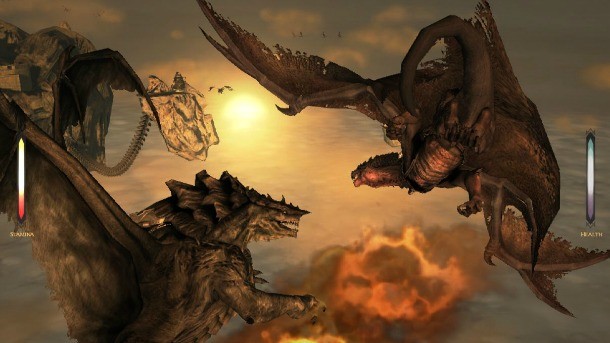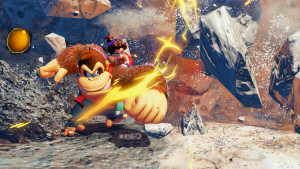Borderlands 4 debut issue is already available for Digital subscriptions. Subscribe Now!
Cult Classics – Lair

Lair had a rough start. Huge expectations surrounded its original release. With Sony publishing, it would be one of the first games to attempt to take full advantage of the PS3 controller’s motion-sensing properties. Developer Factor 5 had a rabid fanbase of flyboys and flygirls who had played the Star Wars: Rogue Squadron games, and were hungry for more flight combat. And perhaps most importantly, Lair was a dream come true for many fantasy enthusiasts – a game all about dragon-riders battling it out in the sky.
Sadly, Lair just couldn’t match up to those lofty expectations. When the game released, perhaps as an attempt to push motion play onto the growing player base of PS3 owners, the game included no traditional analog controls. The motion controls were problematic, leaving players unable to perform the most basic turns and attacks without significant practice. And when you can’t control a game, enjoying it is difficult.
That’s unfortunate, because there’s a lot to love about Lair, and now is a great time to go back and check it out. Several months after release, Sony and Factor 5 updated the game with analog controls. A quick control switch in the Options menu enables this essential feature, and all of a sudden it’s a lot easier to enjoy the things that Lair does right.
This dragon combat game has you zooming through the skies as a young soldier named Rohn, fighting for your country against a rival nation. The story weaves a cinematic plot of betrayal and redemption, exploring themes of religious dogmatism and the dangers of military power. While visuals have begun to show their age, the sweeping mountain ranges and towering cities still look great, and the dragon designs are gorgeous.

The game includes my personal favorite video game orchestral score of all time – an evocative and adventurous collection of music by John Debney that plays out in crisp THX 7.1 sound. Reminiscent of the best moments of John Williams’ Star Wars scores, the music is full-bodied and powerful, fueled by a 90-piece orchestra recorded at Abbey Road Studios. Even if you don’t decide to play the game, think about tracking down this amazing collection of music.
The majestic visuals and music buoy the mid-air combat at the core of the game. Rohn directs his dragon through a variety of combat scenarios. Blast ships out of the ocean with gouts of flame, engage in tumbling airborne duels with enemy dragons, and crash down into hordes of enemy soldiers while slashing and biting through their ranks. Mission objectives are varied and take you to all sorts of locales, helping to keep things fresh throughout the adventure. While various elements of the gameplay are clumsy at times, the sense of power that you want out of the dragon concept is in full effect.
Even with its bright points, no one is going to play Lair and miss its many rough edges and mistakes, especially now that the game is over five years old. Even so, Lair scratches an itch that many gamers have long had – a true exploration of dragon flight and combat – and gives a chance to live out that fantasy in a way few other games have ever offered. If you dismissed the game the first time around, but you share that fantasy, consider tracking down what will certainly be a cheap copy of Lair. With its tragically late-to-the-party analog control scheme patched in, you might find something worth getting excited about.










